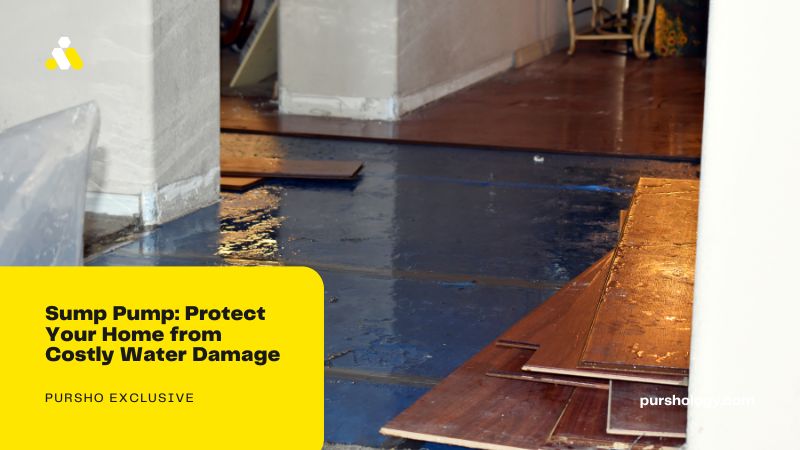Imagine waking up to a flooded basement or a waterlogged crawl space. Unfortunately, this nightmare can become a reality for many homeowners. However, with the right equipment and preventive measures, you can avoid such disasters. One essential tool in safeguarding your home against water damage is a sump pump. In this article, we will explore what a sump pump is, how it works, the different types available, installation tips, maintenance guidelines, and more. By the end, you’ll understand why a sump pump is a crucial investment for any homeowner.
Addressing water damage in Omaha through foundation inspection is essential due to the region’s climate and potential risks associated with moisture intrusion. Omaha experiences various weather conditions, including heavy rainfall and snowmelt, which can lead to water accumulation around foundations. If not properly managed, water can seep into the foundation, causing damage such as cracks, erosion, or structural instability. A thorough foundation inspection helps detect early signs of water damage, allowing for timely mitigation measures like proper drainage solutions, waterproofing, or foundation repairs. Ignoring water damage can lead to more severe structural issues, compromising the integrity of the building and potentially causing health hazards like mold growth. Therefore, prioritizing foundation inspections in Omaha serves as a preventive measure to address water-related issues, ensuring structures’ long-term durability and safety in the face of challenging weather conditions.
Problem With Clogged Downspout Ensuring that your downspouts are free from debris and properly channeling water away from your home is crucial in maintaining a dry foundation and preventing flooding. Regularly inspect and clean your downspouts to prevent blockages that could lead to costly water damage repairs down the line. Protect your investment and your peace of mind by addressing this often overlooked aspect of home maintenance.
1. Understanding Sump Pumps
A sump pump is a mechanical device designed to remove excess water from basements and crawl spaces. It is usually installed in a pit, known as the sump pit, where water naturally collects. When the water level rises to a certain point, the sump pump activates and pumps the water away from the building, keeping it dry and safe.
Sump Pump Check Valve plays a crucial role in the functionality of a sump pump system. This valve ensures that water pumped out by the sump pump doesn’t flow back into the pit once the pump turns off. By preventing backflow, the check valve helps maintain the efficiency and effectiveness of the sump pump, reducing the risk of flooding and water damage in your property
2. How Does a Sump Pump Work?
Sump pumps come in two primary types: pedestal and submersible. The pedestal sump pump sits above the sump pit, while the submersible one is submerged in the water. Both types include a float switch that triggers the pump when the water level reaches a specific height. When activated, the pump’s impeller spins, creating a centrifugal force that pushes water through a discharge pipe and away from the property.
3. Different Types of Sump Pumps
- Pedestal Sump Pumps
Pedestal sump pumps are cost-effective and easier to access for maintenance, but they are more visible in the basement. - Submersible Sump Pumps
Submersible sump pumps are quieter and less obtrusive, as they are installed underwater. They are also more powerful and better suited for heavy-duty applications.
4. Installation Process
Proper sump pump installation is crucial to its efficiency. Here are the basic steps:
- Choose the right location for the sump pit, preferably the lowest point in the basement or crawl space.
- Dig the pit and line it with gravel for better drainage.
- Install the sump pump, ensuring it fits securely in the pit.
- Connect the discharge pipe and direct it away from the foundation.
- Test the pump to ensure it activates correctly.
5. Maintenance Tips
Regular maintenance is essential to keep your sump pump in optimal condition:
- Test the float switch and clean it to prevent debris buildup.
- Check the discharge pipe for clogs and ensure proper drainage.
- Inspect the pump’s components for wear and tear and replace any damaged parts.
- Consider a backup power source in case of electricity outages.
6. Benefits of Sump Pumps
- Protects your home from water damage, which can lead to costly repairs.
- Prevents mold and mildew growth, promoting a healthier living environment.
- Increases property value and appeal to potential buyers.
7. Frequently Asked Questions
Q1: Do I need a sump pump if I don’t have water issues in my basement?
While not everyone may experience basement water issues, a sump pump is still a valuable preventive measure to avoid potential future problems.
Q2: Can I install a sump pump myself?
It is possible to install a sump pump DIY-style, but it’s recommended to hire a professional for the best results and to ensure it complies with local building codes.
Q3: How often should I test my sump pump?
Test your sump pump at least every three months and before the rainy season to guarantee it works when needed.
Q4: What size sump pump do I need?
The size of the sump pump depends on the amount of water it needs to handle. A professional can help determine the right size for your specific needs.
Q5: Can a sump pump handle sewage backup?
No, sump pumps are not designed to handle sewage. For sewage backup, you’ll need a specialized pump or a different solution.
Conclusion
In conclusion, a sump pump is a vital investment in protecting your home from water damage and ensuring a dry and safe living space. Whether you choose a pedestal or submersible sump pump, proper installation and regular maintenance are key to its effectiveness. Remember to consult a professional for installation and sizing recommendations. By taking proactive measures and investing in a reliable sump pump, you can have peace of mind knowing your home is protected from costly water-related disasters.




